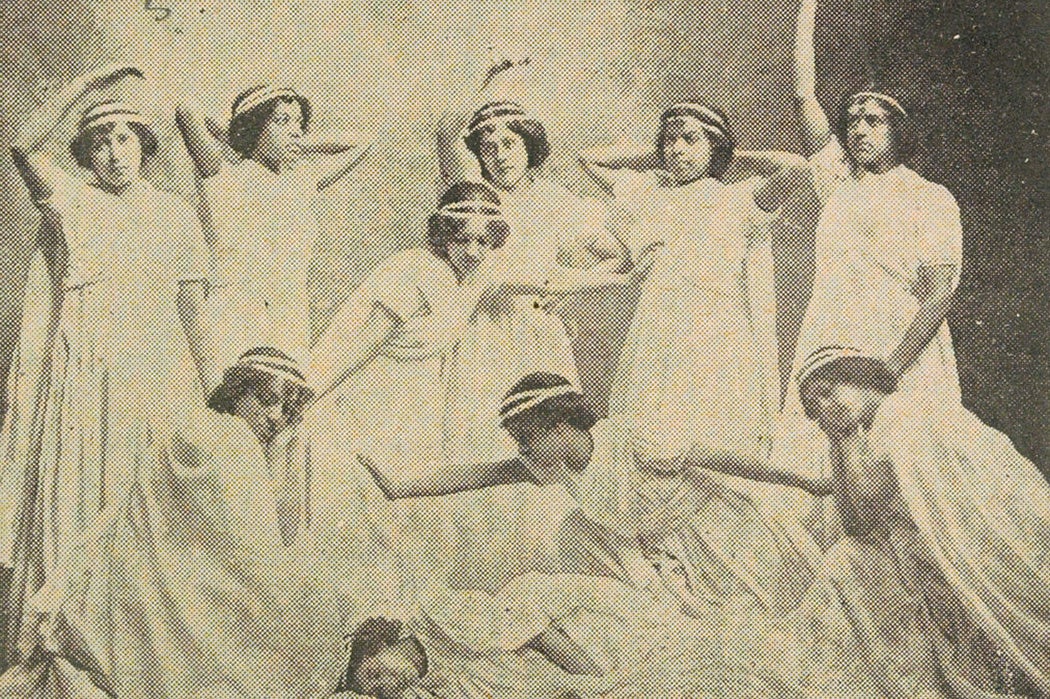Wellness culture often faces legitimate criticism for ignoring structural barriers to health and well-being. But there’s also a long history of approaches to self-care that integrate personal improvement with larger social and political projects. Historian Carrie Streeter looks at one example, the adoption of the “Delsarte method” by a group of Black women in Indianapolis around the turn of the twentieth century.
Starting in the 1880s, Streeter writes, many middle-class American women took “Delsarte” classes, using breathing techniques and exercises to overcome nervousness, learn to present themselves confidently, and even conquer physical ailments like indigestion and fatigue. The technique was named for French theater teacher François Delsarte, who taught that gestures of the body and face mapped directly to particular emotions. But it also drew on various other sources, including yoga and other Asian-influenced traditions. Participants dressed in loose, white robes and struck poses in imitation of Greek statues, designed to convey particular qualities such as Athena’s “balanced repose” or Mercury’s “active will.”
To most white Americans at the time—and some historians later—the Delsarte phenomenon appeared to be a white women’s thing. White American women wrote numerous manuals on the topic and dominated the leadership of elocution schools. But Streeter notes that this appearance was largely a result of segregation. Black civic organizations, clubs, and newspapers were filled with discussions of Delsarte’s value for Black women.
Weekly Newsletter
Streeter focuses on the Flanner Guild Delsarte Club in Indianapolis. The Guild was a settlement house created to support struggling Black city residents. Its matron, Dayse D. Walker, who was trained in elocution and physical culture, created the Delsarte Club in 1901. The immediate goal was holding public performances to raise money for the construction of a new building with space for vocational training and a gymnasium. She also intended to help members develop confidence and oratory skills. Sixteen local Black women joined. The oldest, fifty-five-year-old Julia Smith was a laundress, mother of five, and longtime member of the East End Needle Embroidery Club. The youngest was fifteen-year-old Jessie Darneal.
At their Monday-night meetings, Streeter writes, Walker would have encouraged the women to focus on their own breath. Experts, such as Black school principal and touring speaker Hallie Q. Brown, provided manuals with specific techniques, such as diaphragmatic breathing, effusive breathing, and explosive breathing. These were intended to strengthen the lungs and release tension. Students were instructed to continue focusing on their breath as they moved through a series of dramatic poses such as “Amazon Holding an Upright Spear” and “Winged Victory.”
The club received positive coverage in the local Black media. Even the white-run Indianapolis News took notice, thanks to Black reporter Lillian Thomas Fox, herself a noted public elocutionist and follower of the Delsarte method. Ultimately, the club’s performances successfully raised the money the guild needed to serve local residents while also giving its members new confidence and tools for well-being.







